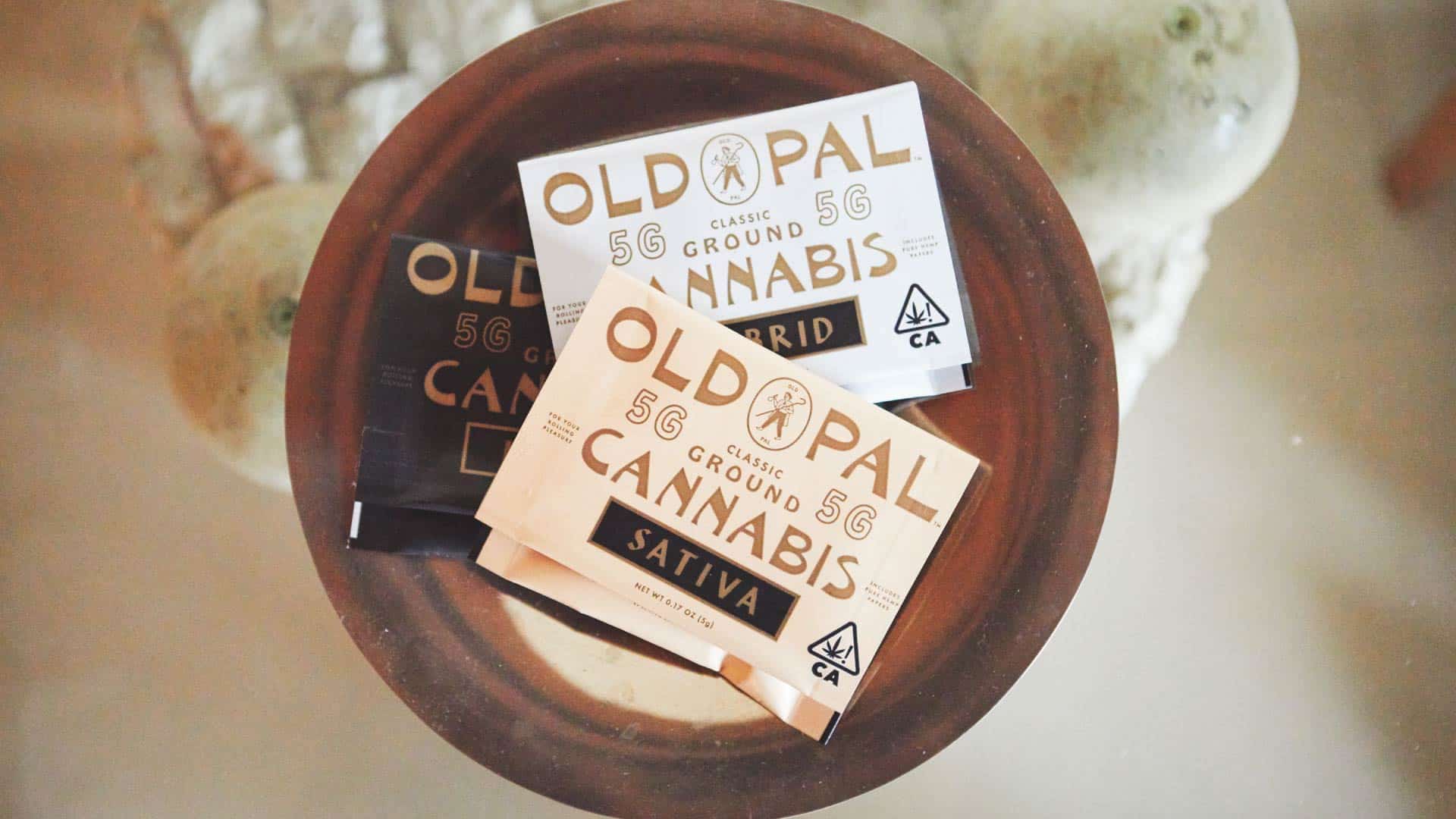There is a lot of lingo surrounding cannabis, its main moniker being only one of those categories. Weed, pot, ganja, grass, greens, you name it–marijuana has a lot of nicknames. Maybe for this reason we’ve also misused–or misunderstood–other terms that can help us level up our linguistics around our favorite plant.
Sativa, indica, and hybrid have become everyday names in cannabis conversation, and they do have meaning. It just might not be exactly what you think. So, in our quest for more cannabis knowledge, we’ve done a bit of digging into cannabis classifications and we can’t wait to share the results with our pals.
Cannabis Classifications
Before we dig into the mad science behind sativa, indica, and hybrid cannabis, let’s nail down a few key terms that can help us better understand the plant.
Cultivars
If you’re a plant enthusiast, you’re probably familiar with the term “cultivar.” It’s a word used to describe the many variations of a particular plant species that have been selectively bred over time to produce unique traits. And cannabis cultivars are no different. The word itself is a clue into the definition. Think of it like a mashup of “cultivated” and “variety” and you have a cultivar!
In fact, the term “strain” is often used interchangeably with “cultivar” in the cannabis world to describe the many different genetic variations of the plant. This is because each cultivar, like each strain, has its own unique set of characteristics that distinguish it from other cultivars within the same species.
Think of cultivars like the children of landrace strains (more on that below). There were only a handful of original cannabis cultivars and from those, we’ve bred and hybridized them into all of the classic names we know today. Just like the picture below, where Durban Poison was the parent to all of these other cultivars that were bred into new and more complex hybrid types of cannabis.
The next time you visit a dispensary or garden center, impress your friends by using the term “cultivar” instead of “strain.”
Chemotypes
When it comes to cannabis, the term “chemotype” refers to the plant’s unique chemical makeup. This term was first used in the 1970s to group cannabis cultivars based on their cannabinoid profiles. Initially, there were only three categories: high THC, high CBD, and a balanced ratio of THC to CBD.
A Type 1 chemotype has high levels of THC, which is responsible for the plant’s psychoactive effects. In contrast, a Type 3 chemotype has high levels of CBD, which has been shown to have therapeutic benefits such as pain relief and anti-inflammatory properties. A Type 2 chemotype has a balanced ratio of THC to CBD, providing a more complete entourage effect for some consumers.
While the original chemotype classification was useful, it did not include other important cannabinoids such as CBN, CBG, CBC, and others. As research continues to expand our understanding of cannabis chemistry, we can expect a more robust database of chemotypes to emerge.
Chemovars
Adding the word “chemovar” to the list of cannabis lingo adds a layer of complexity. Instead of focusing solely on cannabinoids, chemovars also include terpenes in the mix. By categorizing cannabis chemovars based on one to two dominant cannabinoids plus two to four dominant terpenes, we get a much more accurate picture of the plant’s chemical makeup. It’s estimated that there may be hundreds of different chemovars out there, and researchers are working tirelessly to identify and classify them all.
To give you an idea of what a chemovar classification might look like, here are a few potential examples:
- Type 1: High THC (15-25%) + limonene, linalool, bisabolol
- Type 2: Balanced THC:CBD (10%:10%) + myrcene, terpinolene, nerolidol
- Type 3: High CBD (20%) + caryophyllene, limonene, pinene
There is such a vast possibility when it comes to nailing down cannabis chemovars, that we likely won’t see these terms become popularized at the retail level. Yet, there is hope that someday cannabis science will evolve to include a catalog of chemovars for us to study.
What Do Sativa, Indica, and Hybrid Represent?
When most people think of cannabis, they think of the two main types: sativa and indica. Sativa strains are often associated with energizing and uplifting effects, while indica strains are typically thought of as more relaxing and sedating. Hybrid strains, as the name suggests, are a combination of both sativa and indica genetics. Due to modern day breeding, hybrid strains are the fastest growing section of the genetic pool within cannabis plants.
These terms are cleverly used as marketing tools to help the modern cannabis consumer develop a set of expectations for their experience. It’s not necessarily false advertising, and these terms are incredibly helpful for finding a starting point.
However, it’s important to note that these classifications are largely based on physical characteristics of the plant, such as leaf shape and plant height, rather than the effects they produce. In reality, the effects of cannabis are determined by the plant’s chemical composition, specifically the combination of cannabinoids and terpenes present. And, because we each have a unique endocannabinoid system (ECS), we will each process and experience cannabis chemovars differently.
So, will a sativa do to you what it does to your neighbor? Not necessarily.
While an indica-dominant cultivar might lull you into sleep, it just might be the perfect remedy for focusing on a task for another person.
What Do Sativa, Indica, and Hybrid Plants Look Like?
Sativa’s are tall and skinny, with more “fingers” on their leaves. They can grow up to 13 of these slim, jagged edge leaves and the colors vary from light to dark green shades. Sativa was the term coined initially for hemp throughout Europe and Western Eurasia in the 18th century.
Indica’s are the olive-green, short fatties in the garden. They can be so thick you often can’t see the stalk inside. They have fewer fingers, usually seven to nine, and they are broader and fatter than sativa’s. Indica’s were first discovered in India and were harvested for their seeds and fiber. Then, eventually, they were used to make hashish.
Hybrids can be pretty tricky to identify. They tend to look like their parents, so they are somewhat of a “mutt” regarding looks. They may have broad leaves on lanky limbs or have branches that are sparse and spread out on an otherwise massively round plant.
Understanding Cannabis Landrace Strains
Before the widespread cultivation and crossbreeding of cannabis, there were landrace strains, which are essentially the original strains of cannabis. These strains are native to specific regions, and have evolved over time, adapting to their natural environment or terroir. Landrace strains come from all around the globe, such as Afghanistan, Jamaica, Central and South America, and throughout Asia. They are recognized by their distinct effects, flavors, aromas, and chemical makeup. Simply put, they are either pure sativa or pure indica strains.
Landrace strains are generally taller, thinner, and less resinous than modern hybrid strains. They also have longer flowering times and produce lower yields than hybrid strains. However, landrace strains are highly prized for their unadulterated genetics, which are closer to the original wild cannabis sativa ancestor than any other available cannabis strains.
Today, it’s difficult to find pure landrace strains. Most have been replaced by modern hybrids that are better suited for cultivation in controlled environments such as indoor grow ops and greenhouses. However, there are exceptions to this, and some of the world’s most iconic cannabis strains such as Thai Stick, Afghan Kush, and Durban Poison, can trace their lineage back to specific landraces.
If you happen to come across a pure landrace strain, consider yourself lucky, as they are rare and highly coveted by cannabis enthusiasts. Most of the weed we smoke today might be sativa or indica dominant, but a pure sativa or indica can only be claimed by landrace strains.
What Determines the Effects of Cannabis?
So then, if it’s not sativa or indica, what the heck gives cannabis cultivars their effects? Well, it comes down to a combination of things, or perhaps, a culmination or the plant’s natural essences. See, the plant itself was created perfectly. It has everything it needs to defend itself from predators, and contains within its precious trichomes the very ingredients that harmonize a high.
Cannabinoids
While THC and CBD are the most well-known cannabinoids in the cannabis industry, the plant actually contains over 100 of these compounds. Some of these cannabinoids, like THC, are psychoactive and produce the euphoric effects commonly associated with that sweet, sweet feeling of getting stoned.
Others, like CBD, THCA, CBN do not produce any intoxicating effects and may offer potential therapeutic benefits. They are often known and loved for more subtle effects, like relaxation, stress relief, or their ability to nip anxiety in the bud.
These cannabinoids are synthesized in the plant’s trichomes, which are small hair-like structures found on the surface of the plant’s leaves and buds. Both minor and major cannabinoids offer their own unique benefits, but the magic really begins when they are combined with other naturally occurring compounds in the plant.
Terpenes
Terpenes are these tiny, aromatic compounds that develop in cannabis trichomes, adding to the plant’s flavor and fragrance. With so many terpenes present in the herb, you’re bound to come across a variety of scents and flavors such as flowery, spicy, earthy, herbal, and more.
Take myrcene for instance. It has a musky aroma and is known to work synergistically with THC, making its sedative properties stronger. Then there’s limonene, which has a zesty, citrusy scent that can improve your mood and give you a happy high. It’s even used in aromatherapy for its uplifting benefits. Meanwhile, caryophyllene is super unique because it can actually help bring down the psychoactive effects of THC.
Each terpene has its unique set of characteristics and effects, but when they come together with other terpenes and cannabinoids, they create something completely unique and beautiful. Not to mention, they make weed taste delicious and mouth-watering.
Flavonoids
Did you know that there are almost 6,000 different flavonoids in nature? Not to be confused with terpenes, these compounds also bring specific characteristics to their plants. Interestingly, cannabis has its own set of flavonoids that are exclusive to the plant, known as “cannaflavins.” However, these compounds aren’t named for their flavor–they actually play a crucial role in the plant’s coloring.
For instance, some strains of cannabis have a deep purple color because of anthoxanthins and anthocyanins, which are types of flavonoids. And, like cannabinoids and terpenes, flavonoids also contribute to the entourage effect. This synergistic effect is what makes cannabis consumption so special. It’s the combination of all these compounds that create every cultivar’s effects.
The Nose Knows: An Oregon Study
Learning about cannabis is so exciting, and adding to our lingo only helps to understand this incredible plant more deeply. It’s not the sativa, indica, or hybrid label, or even the dominant cannabinoid that makes the plant do what it does best. In fact, a group of Oregon researchers have recently discovered that it’s the scent that gives us the best experience.
This recent study examined what makes a “quality” cannabis experience by surveying consumers. The research is led by a team, including neuroscientist Dr. Adie Rae Wilson-Poe, esteemed cultivator Jeremy Plumb, neurologist and medical researcher Ethan Russo, research scientist Shaban Demirel, and Jeremy L. Sackett. The team’s work is outlined in the paper “The Nose Knows: Aroma, but Not THC Mediates the Subjective Effects of Smoked and Vaporized Cannabis Flower,” published in November 2022.
The study’s objective is to identify features of cannabis that contribute to its appealing subjective effects by applying scientific methods to understand what the consumer enjoys. The research has far-reaching implications for the industry, as it provides a foundation for redefining value based on the enjoyment of the consumer, rather than on THC potency.
To obtain this valuable information, the researchers gathered consumer response data from 276 judges from the Cultivation Classic cannabis competition in 2019 and 2020. Each judge received 8-10 samples of Oregon-grown organic craft cannabis. They were instructed on how best to sample their cultivars and document the flavor, aroma, effect, and overall experience.
The study found that, rather than THC potency, pleasant subjective aroma had the strongest contribution to subjective appeal. The study’s results suggest that “impairment and enjoyment are unrelated phenomena.”
According to Jeremy Plumb, the aroma of cannabis is the most important dimension of character if the goal is to increase enjoyment of the product. As such, protecting aroma and using sensory analysis at all stages of the process is necessary. Plumb notes that consumers must navigate through a confusing mix of factors, including THC potency, to find the best product for them. Sensory analysis could help cultivate a sensuous relationship between consumers and cannabis.
FAQ
What is the difference between sativa and indica cannabis plants?
Sativa and indica are two subspecies of the cannabis plant with different physical and chemical characteristics. Sativa plants are taller, thinner, and have narrow leaves, while indica plants are shorter, bushier, and have wider leaves.
What is a hybrid cannabis plant?
A hybrid cannabis plant is a cross between a sativa and an indica strain. The resulting plant can have characteristics of both subspecies, with varying effects, flavors, and aromas. Hybrid strains can be either sativa-dominant or indica-dominant, depending on the parent strains used in the crossbreeding process. Just about every cultivar in the market is technically a hybrid.
How do the effects of sativa and indica strains differ?
Many people believe that sativa strains are associated with an energizing and uplifting effect, making them a popular choice for daytime use. Indica strains, on the other hand, are known for their relaxing and sedating effects, making them more appropriate for evening or nighttime use. These sentiments can be true, but the overall effects are directly related to the unique combination of terpenes, cannabinoids, and flavonoids–not whether or not they are a sativa, indica, or hybrid.
What are some common terpenes found in cannabis strains?
Some common terpenes found in cannabis strains include myrcene, limonene, pinene, and caryophyllene. Myrcene is associated with sedative effects, while limonene is known for its mood-boosting properties. Pinene is often found in strains with a piney aroma, while caryophyllene is associated with anti-inflammatory properties.
Can flavonoids in cannabis affect the color of the plant?
Yes, flavonoids can affect the color of cannabis plants. Anthoxanthins and anthocyanins are flavonoids that give certain strains of cannabis their deep purple color. These flavonoids are not only responsible for color but also play a role in the entourage effect when combined with other compounds like terpenes and cannabinoids.
One Final Toke
In the big wide world of weed, we are ultimately just students thirsty for more knowledge. This plant and its history is finally celebrated as something more than taboo, and even–revered as something wildly powerful.
We hope you learned something with us as we busted a few sativa vs indica myths, but that your love of the plant has only deepened.







